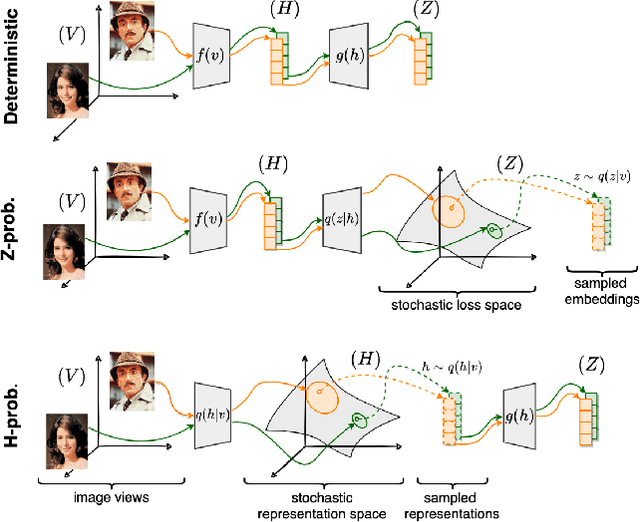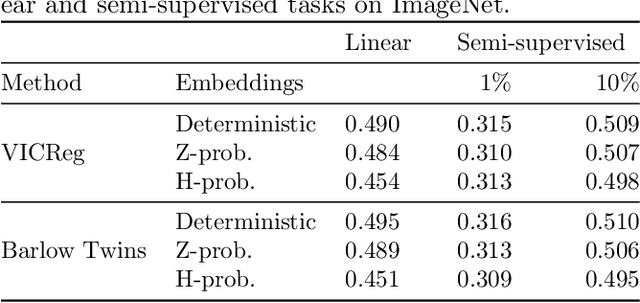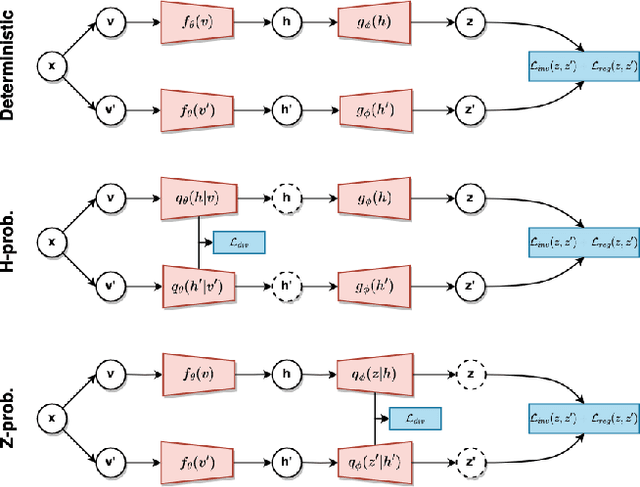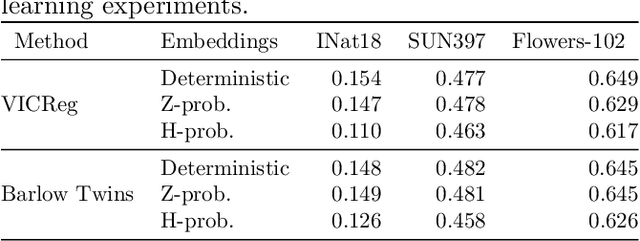Tomasz Kajdanowicz
SMOTExT: SMOTE meets Large Language Models
May 19, 2025Abstract:Data scarcity and class imbalance are persistent challenges in training robust NLP models, especially in specialized domains or low-resource settings. We propose a novel technique, SMOTExT, that adapts the idea of Synthetic Minority Over-sampling (SMOTE) to textual data. Our method generates new synthetic examples by interpolating between BERT-based embeddings of two existing examples and then decoding the resulting latent point into text with xRAG architecture. By leveraging xRAG's cross-modal retrieval-generation framework, we can effectively turn interpolated vectors into coherent text. While this is preliminary work supported by qualitative outputs only, the method shows strong potential for knowledge distillation and data augmentation in few-shot settings. Notably, our approach also shows promise for privacy-preserving machine learning: in early experiments, training models solely on generated data achieved comparable performance to models trained on the original dataset. This suggests a viable path toward safe and effective learning under data protection constraints.
FactSelfCheck: Fact-Level Black-Box Hallucination Detection for LLMs
Mar 21, 2025Abstract:Large Language Models (LLMs) frequently generate hallucinated content, posing significant challenges for applications where factuality is crucial. While existing hallucination detection methods typically operate at the sentence level or passage level, we propose FactSelfCheck, a novel black-box sampling-based method that enables fine-grained fact-level detection. Our approach represents text as knowledge graphs consisting of facts in the form of triples. Through analyzing factual consistency across multiple LLM responses, we compute fine-grained hallucination scores without requiring external resources or training data. Our evaluation demonstrates that FactSelfCheck performs competitively with leading sampling-based methods while providing more detailed insights. Most notably, our fact-level approach significantly improves hallucination correction, achieving a 35% increase in factual content compared to the baseline, while sentence-level SelfCheckGPT yields only an 8% improvement. The granular nature of our detection enables more precise identification and correction of hallucinated content.
Hallucination Detection in LLMs Using Spectral Features of Attention Maps
Feb 24, 2025Abstract:Large Language Models (LLMs) have demonstrated remarkable performance across various tasks but remain prone to hallucinations. Detecting hallucinations is essential for safety-critical applications, and recent methods leverage attention map properties to this end, though their effectiveness remains limited. In this work, we investigate the spectral features of attention maps by interpreting them as adjacency matrices of graph structures. We propose the $\text{LapEigvals}$ method, which utilises the top-$k$ eigenvalues of the Laplacian matrix derived from the attention maps as an input to hallucination detection probes. Empirical evaluations demonstrate that our approach achieves state-of-the-art hallucination detection performance among attention-based methods. Extensive ablation studies further highlight the robustness and generalisation of $\text{LapEigvals}$, paving the way for future advancements in the hallucination detection domain.
Developing PUGG for Polish: A Modern Approach to KBQA, MRC, and IR Dataset Construction
Aug 05, 2024



Abstract:Advancements in AI and natural language processing have revolutionized machine-human language interactions, with question answering (QA) systems playing a pivotal role. The knowledge base question answering (KBQA) task, utilizing structured knowledge graphs (KG), allows for handling extensive knowledge-intensive questions. However, a significant gap exists in KBQA datasets, especially for low-resource languages. Many existing construction pipelines for these datasets are outdated and inefficient in human labor, and modern assisting tools like Large Language Models (LLM) are not utilized to reduce the workload. To address this, we have designed and implemented a modern, semi-automated approach for creating datasets, encompassing tasks such as KBQA, Machine Reading Comprehension (MRC), and Information Retrieval (IR), tailored explicitly for low-resource environments. We executed this pipeline and introduced the PUGG dataset, the first Polish KBQA dataset, and novel datasets for MRC and IR. Additionally, we provide a comprehensive implementation, insightful findings, detailed statistics, and evaluation of baseline models.
Empowering Small-Scale Knowledge Graphs: A Strategy of Leveraging General-Purpose Knowledge Graphs for Enriched Embeddings
May 17, 2024Abstract:Knowledge-intensive tasks pose a significant challenge for Machine Learning (ML) techniques. Commonly adopted methods, such as Large Language Models (LLMs), often exhibit limitations when applied to such tasks. Nevertheless, there have been notable endeavours to mitigate these challenges, with a significant emphasis on augmenting LLMs through Knowledge Graphs (KGs). While KGs provide many advantages for representing knowledge, their development costs can deter extensive research and applications. Addressing this limitation, we introduce a framework for enriching embeddings of small-scale domain-specific Knowledge Graphs with well-established general-purpose KGs. Adopting our method, a modest domain-specific KG can benefit from a performance boost in downstream tasks when linked to a substantial general-purpose KG. Experimental evaluations demonstrate a notable enhancement, with up to a 44% increase observed in the Hits@10 metric. This relatively unexplored research direction can catalyze more frequent incorporation of KGs in knowledge-intensive tasks, resulting in more robust, reliable ML implementations, which hallucinates less than prevalent LLM solutions. Keywords: knowledge graph, knowledge graph completion, entity alignment, representation learning, machine learning
Representation learning in multiplex graphs: Where and how to fuse information?
Feb 27, 2024Abstract:In recent years, unsupervised and self-supervised graph representation learning has gained popularity in the research community. However, most proposed methods are focused on homogeneous networks, whereas real-world graphs often contain multiple node and edge types. Multiplex graphs, a special type of heterogeneous graphs, possess richer information, provide better modeling capabilities and integrate more detailed data from potentially different sources. The diverse edge types in multiplex graphs provide more context and insights into the underlying processes of representation learning. In this paper, we tackle the problem of learning representations for nodes in multiplex networks in an unsupervised or self-supervised manner. To that end, we explore diverse information fusion schemes performed at different levels of the graph processing pipeline. The detailed analysis and experimental evaluation of various scenarios inspired us to propose improvements in how to construct GNN architectures that deal with multiplex graphs.
Unveiling the Potential of Probabilistic Embeddings in Self-Supervised Learning
Oct 27, 2023



Abstract:In recent years, self-supervised learning has played a pivotal role in advancing machine learning by allowing models to acquire meaningful representations from unlabeled data. An intriguing research avenue involves developing self-supervised models within an information-theoretic framework, but many studies often deviate from the stochasticity assumptions made when deriving their objectives. To gain deeper insights into this issue, we propose to explicitly model the representation with stochastic embeddings and assess their effects on performance, information compression and potential for out-of-distribution detection. From an information-theoretic perspective, we seek to investigate the impact of probabilistic modeling on the information bottleneck, shedding light on a trade-off between compression and preservation of information in both representation and loss space. Emphasizing the importance of distinguishing between these two spaces, we demonstrate how constraining one can affect the other, potentially leading to performance degradation. Moreover, our findings suggest that introducing an additional bottleneck in the loss space can significantly enhance the ability to detect out-of-distribution examples, only leveraging either representation features or the variance of their underlying distribution.
Similarity-based Memory Enhanced Joint Entity and Relation Extraction
Jul 14, 2023Abstract:Document-level joint entity and relation extraction is a challenging information extraction problem that requires a unified approach where a single neural network performs four sub-tasks: mention detection, coreference resolution, entity classification, and relation extraction. Existing methods often utilize a sequential multi-task learning approach, in which the arbitral decomposition causes the current task to depend only on the previous one, missing the possible existence of the more complex relationships between them. In this paper, we present a multi-task learning framework with bidirectional memory-like dependency between tasks to address those drawbacks and perform the joint problem more accurately. Our empirical studies show that the proposed approach outperforms the existing methods and achieves state-of-the-art results on the BioCreative V CDR corpus.
Electoral Agitation Data Set: The Use Case of the Polish Election
Jul 13, 2023Abstract:The popularity of social media makes politicians use it for political advertisement. Therefore, social media is full of electoral agitation (electioneering), especially during the election campaigns. The election administration cannot track the spread and quantity of messages that count as agitation under the election code. It addresses a crucial problem, while also uncovering a niche that has not been effectively targeted so far. Hence, we present the first publicly open data set for detecting electoral agitation in the Polish language. It contains 6,112 human-annotated tweets tagged with four legally conditioned categories. We achieved a 0.66 inter-annotator agreement (Cohen's kappa score). An additional annotator resolved the mismatches between the first two improving the consistency and complexity of the annotation process. The newly created data set was used to fine-tune a Polish Language Model called HerBERT (achieving a 68% F1 score). We also present a number of potential use cases for such data sets and models, enriching the paper with an analysis of the Polish 2020 Presidential Election on Twitter.
Domain-Agnostic Neural Architecture for Class Incremental Continual Learning in Document Processing Platform
Jul 11, 2023Abstract:Production deployments in complex systems require ML architectures to be highly efficient and usable against multiple tasks. Particularly demanding are classification problems in which data arrives in a streaming fashion and each class is presented separately. Recent methods with stochastic gradient learning have been shown to struggle in such setups or have limitations like memory buffers, and being restricted to specific domains that disable its usage in real-world scenarios. For this reason, we present a fully differentiable architecture based on the Mixture of Experts model, that enables the training of high-performance classifiers when examples from each class are presented separately. We conducted exhaustive experiments that proved its applicability in various domains and ability to learn online in production environments. The proposed technique achieves SOTA results without a memory buffer and clearly outperforms the reference methods.
 Add to Chrome
Add to Chrome Add to Firefox
Add to Firefox Add to Edge
Add to Edge